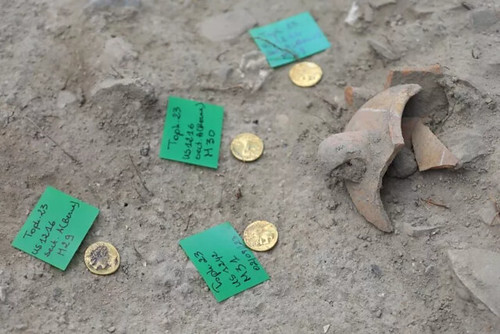
PREV ARTICLE
NEXT ARTICLE
FULL ISSUE
PREV FULL ISSUE
GOLD COINS FOUND WITH CHILDREN'S REMAINSSome 3rd century gold coins have been discovered at the site of an ancient cemetery in Tunisia. -Editor Archaeologists have uncovered five 2,300-year-old gold coins, as well as the remains of young children, at the site of an ancient burial ground. Researchers made the discovery during excavation works in the North African nation of Tunisia, in an area that once formed part of the territory of ancient Carthage, the country's Ministry of Cultural Affairs has announced in a statement. Carthage had a sacred site known as a "tophet," which served as a burial ground, particularly for young children. It is here that archaeologists found the five gold coins dating back to the 3rd century B.C. in August, as well as several urns with the remains of animals, infants and premature babies. The gold coins reflect "the richness of that historical period and [affirm] the value of the civilization of Carthage," the ministry said in a statement. The rare gold coins measure around an inch across and have designs showing the face of Tanit—a symbol of motherhood, fertility and growth for the Carthaginians. Archaeologists believe that the coins were left as offerings to Baal Hammon and Tanit by wealthy worshippers.
To read the complete article, see:
Wayne Homren, Editor The Numismatic Bibliomania Society is a non-profit organization promoting numismatic literature. See our web site at coinbooks.org. To submit items for publication in The E-Sylum, write to the Editor at this address: whomren@gmail.com To subscribe go to: https://my.binhost.com/lists/listinfo/esylum All Rights Reserved. NBS Home Page Contact the NBS webmaster 
|

